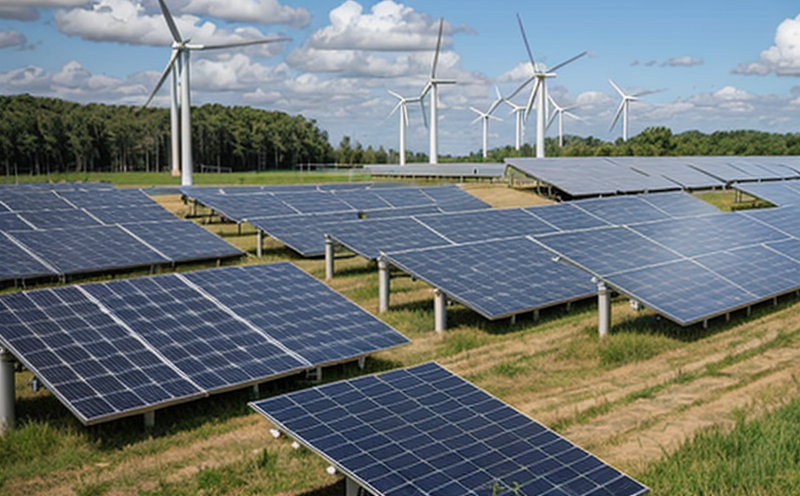Renewable Energy Project Impact Studies: A Comprehensive Approach to Sustainable Development
The transition towards a low-carbon economy has gained significant momentum in recent years, driven by growing concerns over climate change, energy security, and environmental sustainability. As the world shifts its focus towards renewable energy sources such as solar, wind, hydro, and geothermal power, it is essential to conduct thorough impact studies to ensure that these projects align with sustainable development goals.
Impact studies for renewable energy projects involve assessing the potential effects on various stakeholders, including local communities, ecosystems, and the environment. These studies provide valuable insights into the pros and cons of a project, enabling developers, policymakers, and other stakeholders to make informed decisions about its feasibility and implementation. In this article, we will delve into the importance of impact studies for renewable energy projects, discuss their key components, and provide examples of successful impact assessments.
Why Conduct Impact Studies for Renewable Energy Projects?
Renewable energy projects can have both positive and negative impacts on the environment, local communities, and the economy. While these projects offer numerous benefits, such as reducing greenhouse gas emissions, improving air quality, and creating jobs, they also pose potential risks, including:
Land use changes: Large-scale solar or wind farms may require significant land areas, leading to conflicts over land use and displacement of local communities.
Visual impact: Tall turbines or large solar panels can alter the visual landscape, affecting aesthetics and potentially impacting tourism.
Noise pollution: Wind farms can generate noise levels that disturb local residents, particularly during construction and operation phases.
Water usage: Hydroelectric power plants require significant water resources, which can strain local water supplies, especially in areas with drought-prone conditions.
What Are the Key Components of a Renewable Energy Impact Study?
A comprehensive impact study for renewable energy projects should include the following components:
Social Impact Assessment (SIA): This component assesses the potential effects on local communities, including displacement, cultural heritage, and social structures. The SIA should also evaluate the projects potential to create jobs, improve livelihoods, and enhance community services.
Environmental Impact Assessment (EIA): This component evaluates the potential environmental impacts of the project, including:
Air quality
Water quality
Noise pollution
Visual impact
Ecological habitats and biodiversity
Climate change implications
Technical Feasibility Study: This component assesses the technical viability of the project, including:
Resource availability (e.g., wind speed, solar radiation)
Equipment selection and installation
Project design and layout
Maintenance and operation requirements
Economic Impact Assessment: This component evaluates the potential economic impacts of the project, including:
Job creation and employment opportunities
Local procurement and supply chain development
Revenue generation for local communities and governments
Investment returns and financial viability
Case Studies: Successful Impact Assessments in Renewable Energy Projects
Several renewable energy projects have successfully conducted impact assessments to ensure that their operations align with sustainable development goals. For instance:
The London Array Offshore Wind Farm: This project in the UKs Thames Estuary assessed its potential impacts on marine ecosystems, bird populations, and visual scenery. The study identified measures to minimize these effects, such as implementing mitigation strategies for wildlife habitats and designing turbines to blend with the surrounding landscape.
The Chilean Atacama Solar Project: This large-scale solar farm in Chile conducted a thorough impact assessment to address concerns over water usage, land use changes, and visual impacts. The study proposed measures to conserve local water resources, enhance biodiversity through habitat restoration, and ensure that local communities benefit from the project.
QA: Additional Details on Renewable Energy Impact Studies
1.
What is the primary goal of a renewable energy impact study?
The primary goal of an impact study is to identify potential risks and opportunities associated with a renewable energy project, enabling developers and policymakers to make informed decisions about its feasibility and implementation.
2. Who typically conducts renewable energy impact studies?
Impact studies are often conducted by multidisciplinary teams comprising experts in environmental science, social sciences, engineering, economics, and law.
3. What is the typical duration of a renewable energy impact study?
The duration of an impact study can vary depending on the projects size, complexity, and location. However, most studies take several months to a year or more to complete.
4. Are there any international guidelines or frameworks for conducting renewable energy impact studies?
Yes, various international guidelines and frameworks exist, including the World Bank Groups Environmental and Social Framework (ESF), the International Finance Corporations Performance Standards on Environmental and Social Sustainability, and the European Unions Environmental Impact Assessment (EIA) Directive.
5. Can renewable energy projects avoid conducting impact studies altogether?
No, it is essential for all large-scale renewable energy projects to conduct thorough impact assessments to ensure that their operations align with sustainable development goals and minimize potential risks.
In conclusion, impact studies are an indispensable component of the renewable energy project development process. By thoroughly assessing potential impacts on various stakeholders, including local communities, ecosystems, and the environment, developers can identify opportunities for improvement and minimize risks associated with these projects. This article highlights the importance of comprehensive impact assessments, providing insights into key components, case studies, and QA sections to aid in understanding the significance of these studies.

































